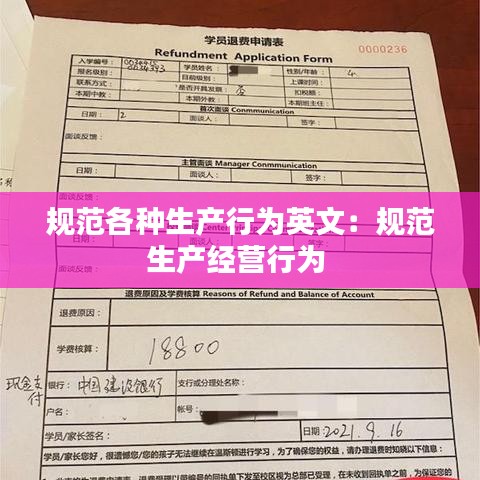Introduction to the Importance of Standardizing Production Activities
Standardization of production activities is a crucial aspect of any manufacturing process. It ensures consistency, quality, and efficiency in the production of goods and services. By establishing clear and uniform procedures, companies can minimize errors, reduce waste, and improve overall productivity. This article aims to highlight the key aspects of standardizing various production activities in the English language, emphasizing the benefits and best practices involved.
Defining Standardization in Production
Standardization in production refers to the process of establishing and implementing consistent methods, procedures, and specifications across all stages of the manufacturing process. This includes everything from raw material acquisition to product delivery. The goal is to create a framework that ensures every step is carried out in a uniform and predictable manner.
Standardization helps in achieving the following objectives:
- Consistency in product quality
- Efficiency in production processes
- Reduction in waste and costs
- Enhanced safety and compliance with regulations
- Improved employee training and skill development
Key Aspects of Standardizing Production Activities
1. Establishing Standard Operating Procedures (SOPs)
Standard Operating Procedures are detailed, written instructions that outline the steps to be followed for a specific task or process. By creating SOPs, companies can ensure that all employees are performing their jobs in the same manner, reducing the risk of errors and inconsistencies.
2. Implementing Quality Control Measures
Quality control is essential in maintaining the standardization of production activities. This involves setting up systems to monitor and inspect products at various stages of the production process. Quality control measures can include regular audits, statistical process control (SPC), and the use of quality management systems (QMS) like ISO standards.
3. Training and Development Programs
Employees should be adequately trained to understand and follow the standardized procedures. Training programs should focus on the specific skills and knowledge required for each role, ensuring that employees can perform their tasks effectively and efficiently.
4. Continuous Improvement Initiatives
Continuous improvement, also known as Kaizen, is a fundamental aspect of standardizing production activities. It involves regularly reviewing and updating the standardized procedures to enhance productivity, reduce waste, and improve quality. Tools such as Lean Manufacturing and Six Sigma can be employed to drive these initiatives.
Benefits of Standardizing Production Activities
1. Increased Productivity
By eliminating inefficiencies and reducing errors, standardization can lead to increased productivity. Employees can focus on their tasks without the need to constantly adapt to new or inconsistent procedures, allowing them to work more efficiently.
2. Improved Quality
Consistency in the production process ensures that products meet the required quality standards. This reduces the likelihood of defects and customer complaints, leading to higher customer satisfaction and loyalty.
3. Cost Reduction
Standardization can help in reducing waste, minimizing rework, and optimizing resource utilization. This leads to lower production costs and improved profitability for the company.
4. Enhanced Safety and Compliance
Standardized procedures help in ensuring that all employees are aware of and adhere to safety regulations and compliance requirements. This reduces the risk of accidents and legal issues.
Best Practices for Standardizing Production Activities
1. Develop a Clear and Comprehensive Standardization Plan
Before implementing standardization, it is essential to create a detailed plan that outlines the goals, timelines, and resources required. This plan should also consider the potential challenges and risks involved.
2. Involve All Stakeholders
Standardization is a collaborative effort that requires input from all stakeholders, including employees, managers, and customers. Involving everyone in the process can help ensure that the standards are practical and effective.
3. Use Visual Management Tools
Visual management tools, such as posters, charts, and boards, can help in communicating the standardized procedures to all employees. These tools should be easily accessible and understandable.
4. Regularly Review and Update Standards
Standardization is not a one-time activity; it requires continuous monitoring and improvement. Regularly reviewing and updating the standards can help adapt to changing market demands and technological advancements.
Conclusion
Standardizing production activities is a critical component of a successful manufacturing process. By implementing clear procedures, quality control measures, and continuous improvement initiatives, companies can achieve increased productivity, improved quality, and reduced costs. Emphasizing the
转载请注明来自北京京通茗荟网络科技有限公司,本文标题:《规范各种生产行为英文:规范生产经营行为 》












 蜀ICP备2022005971号-1
蜀ICP备2022005971号-1
还没有评论,来说两句吧...